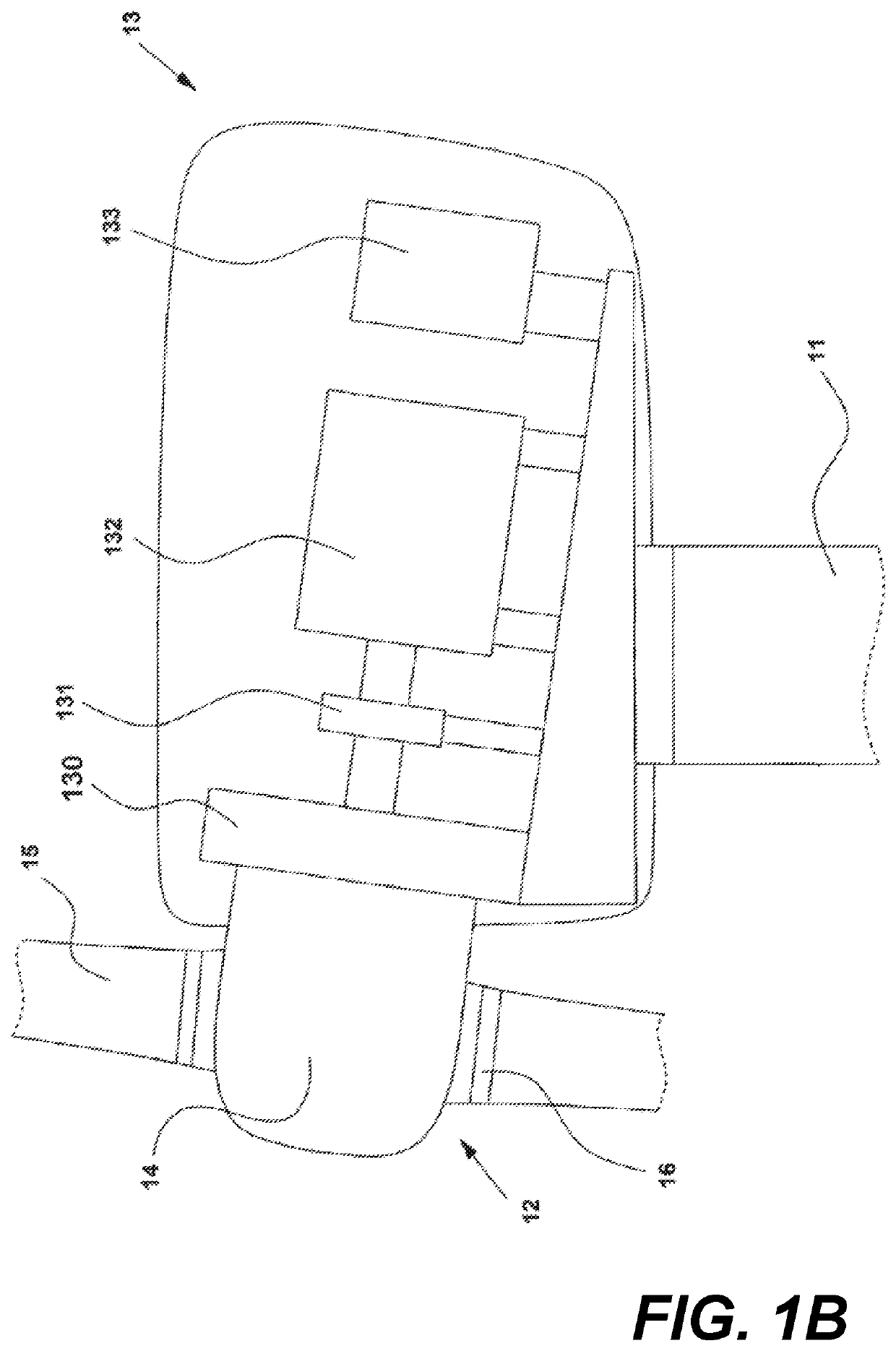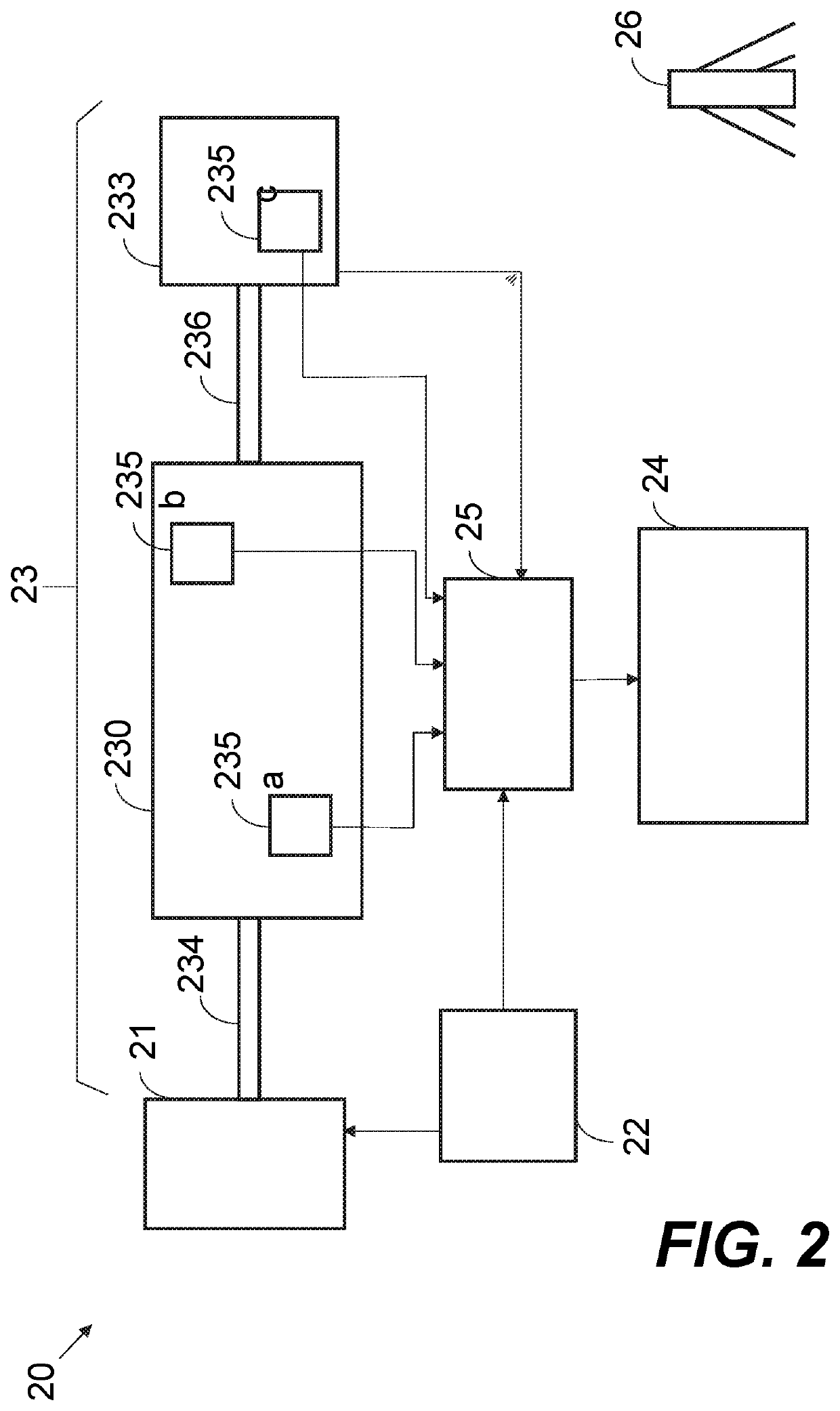Predicting wind turbine noise
a technology of wind turbines and noise, applied in the direction of motors, engine control parameters, engine fuctions, etc., can solve the problems of wind turbine noise including mechanical noise, noise emission from wind turbines includes both mechanical noise and noise driven by components within the nacelle, and achieve the effect of improving the prediction of airborne tonality
- Summary
- Abstract
- Description
- Claims
- Application Information
AI Technical Summary
Benefits of technology
Problems solved by technology
Method used
Image
Examples
Embodiment Construction
[0044]FIG. 1A illustrates a large modern wind turbine 10 as known in the art, comprising a tower 11 and a wind turbine nacelle 13 positioned on top of the tower. Wind turbine blades 15 of a turbine rotor 12 are mounted on a common hub 14 which is connected to the nacelle 13 through the low speed shaft extending out of the nacelle front. The wind turbine blades 15 of the turbine rotor 12 are connected to the hub 14 through pitch bearings 16, enabling the blades to be rotated around their longitudinal axis. The pitch angle of the blades 15 can then be controlled by linear actuators, stepper motors or other means for rotating the blades. The illustrated wind turbine 10 has three turbine blades 15, but it will be appreciated that the wind turbine could have another number of blades such as one, two, four, five or more.
[0045]FIG. 1B illustrates a simplified cross section of an example nacelle 13 of a wind turbine 10, as seen from the side. The nacelle 13 exists in a multitude of variatio...
PUM
 Login to View More
Login to View More Abstract
Description
Claims
Application Information
 Login to View More
Login to View More - R&D
- Intellectual Property
- Life Sciences
- Materials
- Tech Scout
- Unparalleled Data Quality
- Higher Quality Content
- 60% Fewer Hallucinations
Browse by: Latest US Patents, China's latest patents, Technical Efficacy Thesaurus, Application Domain, Technology Topic, Popular Technical Reports.
© 2025 PatSnap. All rights reserved.Legal|Privacy policy|Modern Slavery Act Transparency Statement|Sitemap|About US| Contact US: help@patsnap.com



